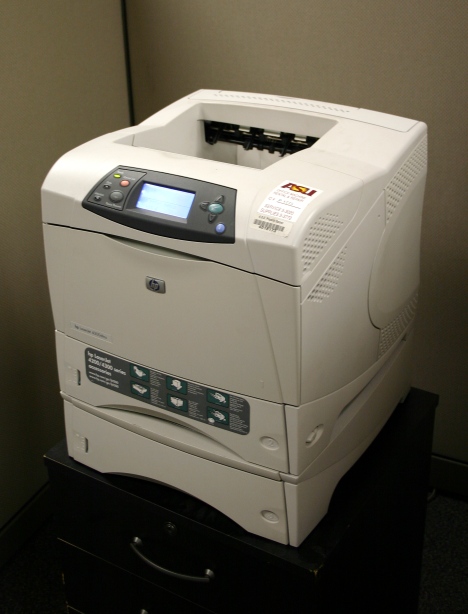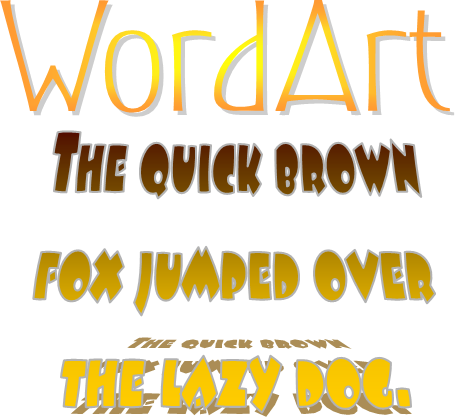|
MacWrite Pro
MacWrite is a discontinued WYSIWYG word processor released along with the first Apple Macintosh systems in 1984. Together with MacPaint, it was one of the two original "killer applications" that propelled the adoption and popularity of the GUI in general, and the Mac in particular. MacWrite was spun off to Claris, which released a major update in 1989 as MacWrite II. A further series of improvements produced 1993's MacWrite Pro, but further improvements were few and far between. By the mid-1990s, MacWrite was no longer a serious contender in the word processing market, development ended around 1995, and it was completely discontinued in 1998 due to dwindling sales. History Development When the Mac was first being created, it was clear that users would interact with it differently from other personal computers. Typical computers of the era booted into text-only disk operating system or BASIC environments, requiring the users to type in commands. Some of these programs may hav ... [...More Info...] [...Related Items...] OR: [Wikipedia] [Google] [Baidu] |
Graphical User Interface
A graphical user interface, or GUI, is a form of user interface that allows user (computing), users to human–computer interaction, interact with electronic devices through Graphics, graphical icon (computing), icons and visual indicators such as secondary notation. In many applications, GUIs are used instead of text-based user interface, text-based UIs, which are based on typed command labels or text navigation. GUIs were introduced in reaction to the perceived steep learning curve of command-line interfaces (CLIs), which require commands to be typed on a computer keyboard. The actions in a GUI are usually performed through direct manipulation interface, direct manipulation of the graphical elements. Beyond computers, GUIs are used in many handheld mobile devices such as MP3 players, portable media players, gaming devices, smartphones and smaller household, office and Distributed control system, industrial controls. The term ''GUI'' tends not to be applied to other lower-displa ... [...More Info...] [...Related Items...] OR: [Wikipedia] [Google] [Baidu] |
XTND
XTND was a document import/export system developed by Claris for their products on the Apple Macintosh. Products supporting XTND placed an additional popup menu in the open and save dialogs, allowing users to read and write documents of any supported format. The name is a four-letter contraction of ''extend'', the Mac using four-letter identifiers in its system resource files. XTND was first introduced in 1989 with MacWrite II, Claris CAD 2.0 and with FileMaker Pro in 1991. The system proved popular and became a major selling point for Claris products, which were otherwise considered somewhat "low end". The system was soon used by a number of other products as well, and became fairly common during the early 1990s. In 1992 Claris gave the system to Apple, who eventually re-branded it as a basic part of the Mac OS known as the Translation Manager. They also added Macintosh Easy Open which offered to open unknown documents using software installed on the machine and converting it u ... [...More Info...] [...Related Items...] OR: [Wikipedia] [Google] [Baidu] |
Classic Mac OS
Mac OS (originally System Software; retronym: Classic Mac OS) is the series of operating systems developed for the Mac (computer), Macintosh family of personal computers by Apple Computer, Inc. from 1984 to 2001, starting with System 1 and ending with Mac OS 9. The Macintosh operating system is credited with having popularized the graphical user interface concept. It was included with every Macintosh that was sold during the era in which it was developed, and many updates to the system software were done in conjunction with the introduction of new Macintosh systems. Apple released the Macintosh 128K, original Macintosh on January 24, 1984. The System 1, first version of the system software, which had no official name, was partially based on the Lisa OS, which Apple previously released for the Apple Lisa, Lisa computer in 1983. As part of an agreement allowing Xerox to buy Share (finance), shares in Apple at a favorable price, it also used concepts from the PARC (company), Xerox ... [...More Info...] [...Related Items...] OR: [Wikipedia] [Google] [Baidu] |
Desktop Publishing
Desktop publishing (DTP) is the creation of documents using dedicated software on a personal ("desktop") computer. It was first used almost exclusively for print publications, but now it also assists in the creation of various forms of online content. Desktop publishing software can generate page layouts and produce text and image content comparable to the simpler forms of traditional typography and printing. This technology allows individuals, businesses, and other organizations to self-publish a wide variety of content, from menus to magazines to books, without the expense of commercial printing. Desktop publishing often requires the use of a personal computer and WYSIWYG page layout software to create documents for either large-scale publishing or small-scale local printing and distribution although non-WYSIWYG systems such as TeX and LaTeX are also used, especially in scientific publishing. Originally, desktop publishing methods provided more control over design, layou ... [...More Info...] [...Related Items...] OR: [Wikipedia] [Google] [Baidu] |
Laser Printer
Laser printing is an electrostatic digital printing process. It produces high-quality text and graphics (and moderate-quality photographs) by repeatedly passing a laser beam back and forth over a Electric charge, negatively charged cylinder called a "drum" to define a differentially charged image. The drum then selectively collects electrically charged powdered ink (toner (printing), toner), and transfers the image to paper, which is then heated to permanently fuse the text, imagery, or both to the paper. As with digital photocopiers, laser computer printer, printers employ a Xerography, xerographic printing process. Laser printing differs from traditional xerography as implemented in analog photocopiers in that in the latter, the image is formed by reflecting light off an existing document onto the exposed drum. The laser printer was invented at Xerox PARC (company), PARC in the 1970s. Laser printers were introduced for the office and then home markets in subsequent years by IBM ... [...More Info...] [...Related Items...] OR: [Wikipedia] [Google] [Baidu] |
LaserWriter
The LaserWriter is a laser printer with built-in PostScript interpreter sold by Apple, Inc. from 1985 to 1988. It was one of the first laser printers available to the mass market. In combination with WYSIWYG publishing software like PageMaker that operated on top of the graphical user interface of Macintosh computers, the LaserWriter was a key component at the beginning of the desktop publishing revolution.H. A. Tucker: Desktop Publishing.'' In: Maurice M. de Ruiter: ''Advances in Computer Graphics III.'' Springer, 1988, , P. 296.Michael B. Spring: Electronic printing and publishing: the document processing revolution.'' CRC Press, 1991, , Page 46. History Development of laser printing Laser printing traces its history to efforts by Gary Starkweather at Xerox in 1969, which resulted in a commercial system called the Xerox 9700. IBM followed this with the IBM 3800 system in 1976. Both machines were large, room-filling devices handling the combined output of many users.Ben ... [...More Info...] [...Related Items...] OR: [Wikipedia] [Google] [Baidu] |
ImageWriter
The ImageWriter is a product line of dot matrix printers formerly manufactured by Apple Computer, Inc., and designed then to be compatible with their entire line of computers. There were three different models introduced over time, which were popular among Apple II and Mac owners. Original ImageWriter The first ImageWriter is a serial-based dot matrix printer introduced by Apple Computer in late 1983. The printer was essentially a re-packaged 9-pin dot matrix printer from C. Itoh Electronics (model C. Itoh 8510, with a modified ROM and pinout), released the same year. It was introduced as a replacement for the earlier parallel-based Apple Dot Matrix Printer/DMP (also a C. Itoh model) and, while primarily intended for the Apple II, worked across Apple's entire computer product line. The ImageWriter could produce images as well as text, up to a resolution of 144 dots per inch, DPI and a speed of about 120 characters per second, CPS (characters per second). In text mode, ... [...More Info...] [...Related Items...] OR: [Wikipedia] [Google] [Baidu] |
Computer Printer
A printer is a peripheral machine which makes a durable representation of graphics or text, usually on paper. While most output is human-readable, bar code printers are an example of an expanded use for printers. Different types of printers include 3D printers, inkjet printers, laser printers, and thermal printers. History The first computer printer designed was a mechanically driven apparatus by Charles Babbage for his difference engine in the 19th century; however, his mechanical printer design was not built until 2000. He also had plans for a curve plotter, which would have been the first computer graphics printer if it was built. The first patented printing mechanism for applying a marking medium to a recording medium or more particularly an electrostatic inking apparatus and a method for electrostatically depositing ink on controlled areas of a receiving medium, was in 1962 by C. R. Winston, Teletype Corporation, using continuous inkjet printing. The ink was a red sta ... [...More Info...] [...Related Items...] OR: [Wikipedia] [Google] [Baidu] |
Dot Matrix
A dot matrix is a 2-dimensional patterned Array data structure, array, used to represent characters, symbols and images. Most types of modern technology use dot matrices for display of information, including mobile phones, televisions, and printers. The system is also used in textiles with sewing, knitting and weaving. An alternate form of information display using lines and curves is known as a vector display, was used with early computing devices such as air traffic control radar displays and pen-based plotters but is no longer used. Electronic vector displays were typically monochrome only, and either leave the interiors of closed vector shapes unfilled, or perform slow, time-consuming and often non-uniform shape-filling, as on pen-based plotters. In printers, the dots are usually the darkened areas of the paper. In displays, the dots may light up, as in an light-emitting diode, LED, cathode-ray tube, CRT, or plasma display, or darken, as in an liquid crystal display, LCD. ... [...More Info...] [...Related Items...] OR: [Wikipedia] [Google] [Baidu] |
Microsoft Word
Microsoft Word is a word processor program, word processing program developed by Microsoft. It was first released on October 25, 1983, under the name Multi-Tool Word for Xenix systems. Subsequent versions were later written for several other platforms including IBM PCs running DOS (1983), Apple Macintosh running the Classic Mac OS (1985), AT&T UNIX PC (1985), Atari ST (1988), OS/2 (1989), Microsoft Windows (1989), SCO Unix (1990), Handheld PC (1996), Pocket PC (2000), macOS (2001), Web browsers (2010), iOS (2014), and Android (operating system), Android (2015). Microsoft Word has been the ''de facto'' standard word processing software since the 1990s when it eclipsed WordPerfect. Commercial versions of Word are licensed as a standalone product or as a component of Microsoft Office, which can be purchased with a perpetual license, as part of the Microsoft 365 suite as a Software as a service, subscription, or as a one-time purchase with Office 2024. History In 1981, Microsoft ... [...More Info...] [...Related Items...] OR: [Wikipedia] [Google] [Baidu] |
WriteNow
WriteNow is a word processor application for the original Apple Macintosh and later computers in the NeXT product line. The application is one of two word processors that were first developed with the goal that they be available at the time of the Mac product launch in 1984, and was the primary word processor for computers manufactured by NeXT. WriteNow was purchased from T/Maker by WordStar in 1993, but shortly after that, WordStar merged with SoftKey, which ultimately led to its discontinuation. It had a combination of powerful features, excellent performance, and small system requirements. History WriteNow was written for Apple Computer, Inc., by John Anderson and Bill Tschumy in Seattle, separate from the Macintosh computer and MacWrite word processor development teams. Steve Jobs was concerned that those programming MacWrite were not going to be ready for the 1984 release date of the Macintosh; Apple Computer therefore commissioned a team of programmers, friends of Ap ... [...More Info...] [...Related Items...] OR: [Wikipedia] [Google] [Baidu] |






